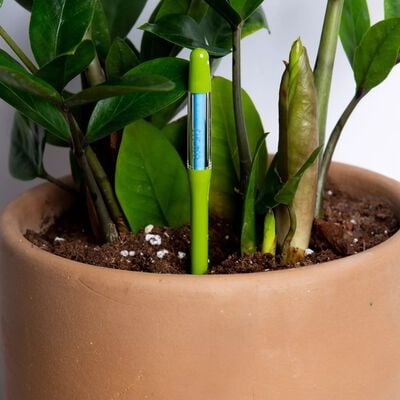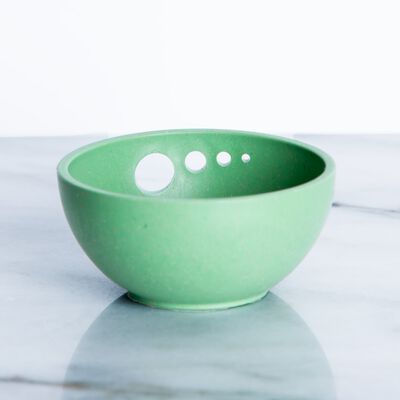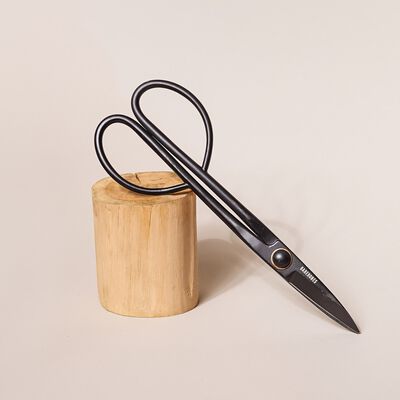
Your Guide To: Tomatoes
Make these juicy fruits the highlight of your summer.
Nothing screams summer more than red, juicy tomatoes. Fresh Caprese salads, perfectly grilled burgers with a meaty tomato on top—they are truly the highlight of the season.
How to Keep Tomatoes Happy
Plant tomatoes in late spring to early summer, except in zone 10 where they are a fall and winter crop. Tomatoes need plenty of room to grow, so it is important to be aware of where you plant. Robust, long-vined, indeterminate varieties need to be spaced about 3 feet apart, while stockier, determinate plants can be grown 2 feet apart. Burying two-thirds of the stem will help you grow a strong tomato plant. This allows the plant to sprout roots along the buried stem, encouraging vigorous growth and the ability to find water in a drought. You will need to stake, trellis, or cage most tomato plants to keep them off the ground. Find out here.
How Much Lighting Does My Tomato Plant Need?
Tomatoes thrive in sunny spots, so choose an area that receives at least 6 to 8 hours of light. Sunlight brings out tomatoes' best flavors.
How Do I Know When to Water My Tomato Plant?
Give your tomato plant a good drink of water whenever the top inch of soil is dry. Remember, your plant will need more water as it increases in size and summer temperatures rise.
How Do I Use Plant Food for My Tomato Plant?
Plant food is an important part of fostering healthy growth. We recommend feeding your tomato plant with Miracle-Gro® Water Soluble All Purpose Plant Food once every 7 to 14 days. The plant fertilizer instantly feeds to grow bigger, more beautiful plants compared to unfed plants. Just mix with water according to package directions and feed at the base of the plant - it's that easy.
What Is a Tomato Plant's Ideal Environment?
Tomatoes aren't picky when it comes to growing environments. You can plant them in raised beds, in-ground gardens, or containers. Just make sure to space properly and support the plant with a stake or cage.
How Do I Harvest Tomatoes?
You will know your tomatoes are ripe when they are bright red and firm. The fruits continue to ripen after picking, so it is totally acceptable to harvest a bit early, especially if pests are nibbling your crop or you are expecting a lot of rain (a sudden uptake of water by the plant can crack fruit and dilute the flavor).
How to Address Common Tomato Issues
Summer heat can impact tomatoes in various ways. Some tomato varieties have trouble setting fruit in high temperatures—but don't worry! Little green fruits will soon appear when nights begin cooling down. If you live in an area where summertime temperatures are typically in the 90s, consider growing heat-tolerant varieties such as Arkansas Traveler, Celebrity, or Heatmaster. It is also important to maintain even soil moisture, especially in drought-prone areas. This helps prevent cracked fruits and keep blossom end rot at bay.
Fungal diseases, like early blight, tend to make an appearance in humid weather. Be sure to remove any unhealthy looking or diseased leaves throughout the season. Late blight kills plants quickly; the only way to control or protect against it is to treat with an approved fungicide and keep your garden clean of plant debris.
And, as always, you will want to be on the lookout for pests. Tomato hornworms (big green caterpillars) like to chow down on tomato foliage in mid-summer, which can damage the fruits. Deal with pests as soon as you spot them.
What to Do if I Still Have Questions
Our plant experts are here for you if you need advice about tomatoes or buying herb and vegetable plants online. With a vast array of plants for delivery, you'll be sure to find the right option to elevate your space. Visit our website, email at [email protected], or chat live with a Greendigs team member to get all of your growing questions answered.
Sources
https://bonnieplants.com/blogs/how-to-grow/growing-tomatoes?_pos=1&_psq=growing%20tom&_ss=e&_v=1.0


